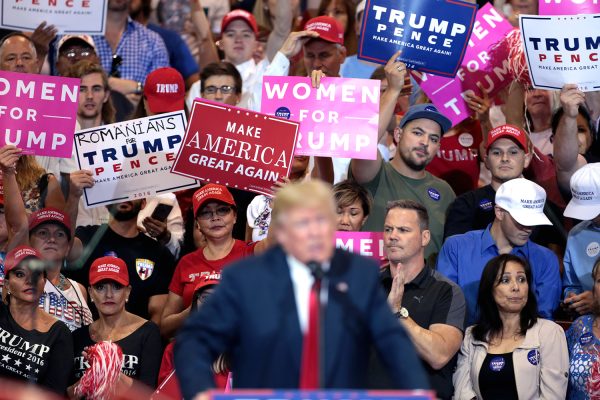
Donald Trump is splitting America’s Republican Party in two — and his side is winning.
NBC News and The Wall Street Journal asked Republican voters if they consider themselves to be a supporter of the president first or a supporter of the Republican Party. 58 percent said Trump, 38 percent the party.
The Trump supporters are more likely to hail from rural areas and to be men while Republican Party supporters are more likely to be women and residents of the suburbs.
CNN found a similar divide: Trump’s support is strongest among old white voters without a college education. Republicans under the age of fifty with a degree are disappointed in him.
These trends portend a realignment of America’s two-party system in which the Democrats become the party of the affluent and the optimistic and the Republicans a coalition of the left behind.
Before such a realignment can happen, though, the Republicans need to break up.
The Republican establishment is losing
The Republican Party has long had a nationalist-populist wing, but between Barry Goldwater’s nomination in 1964 and Trump’s last year pro-business pragmatists always prevailed.
NBC’s numbers suggest that Trump’s victory was no fluke and the nationalist wing has taken over.
That is borne out by demographic trends: the defection of white lower-class voters to the Republicans and the flight of middle-income college graduates to the Democrats.
And it is supported by the ascendancy of populist right-wing media, like Breitbart, Fox News and talk radio, at the expense of more traditional outlets, such as National Review and The Wall Street Journal.
Democrats are also divided
There is parallel division on the left, between a business-friendly, socially liberal faction that has been dominant for the last few decades and social democrats who argue for deemphasizing “identity politics” in favor of more interventionist economic policies.
This tension came to a head last year as well, when Hillary Clinton and Bernie Sanders vied for the presidential nomination.
A powerful drug
If politics weren’t so passionate, centrist, cosmopolitan and urban voters would have already converged into one party and suburban and rural nationalists into another.
But party loyalty is a powerful drug. By far most Republicans still voted for Trump, no matter their personal opinion of him, just like most of the Democrats who supported Sanders during the primaries ended up voting for Clinton.
Next year’s midterm elections should tell us how much Trump is really changing the two-party system.
